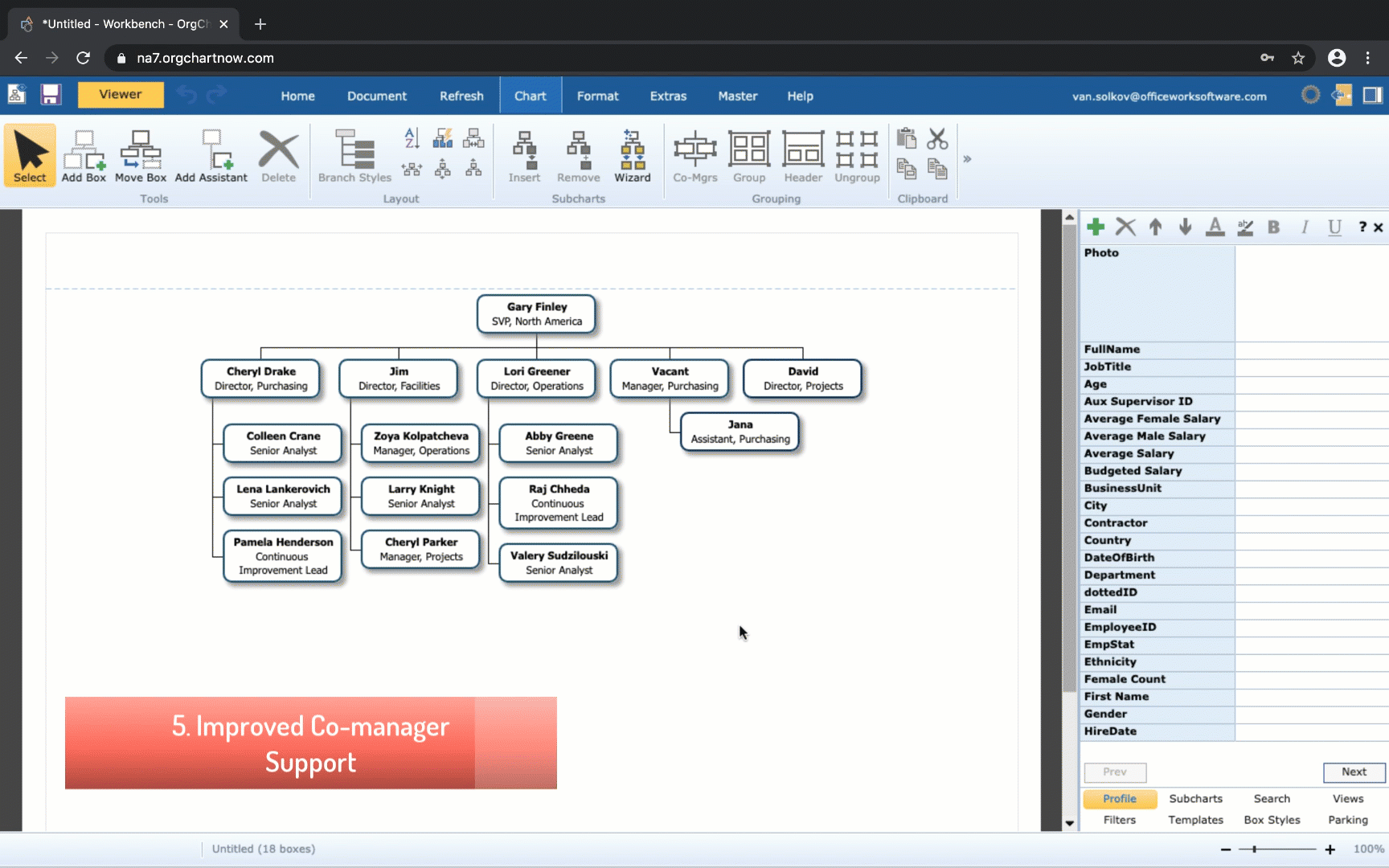February 19, 2020
6:26 AM
By OrgChart Team
Co-leadership is a term growing in prominence as a management solution. Simply defined, co-leadership is the concept of having two leaders equally positioned and sharing the responsibilities of leadership. A research paper from Regent University concluded that while “shared leadership has its challenges and can be difficult to implement, overall the benefits of shared leadership hold promise.” With increasingly complex organizational structures, co-leadership has been credited for strengthening interdepartmental synergies which had previously lacked coordination.
A 2016 Swedish study looked at combined health and social work services which traditionally — due to differentiating factors such as funding sources, economic incentives and legal frameworks — have struggled to function together effectively for its patients. Interviews with co-leaders revealed that in this complex area of service the structure was viewed positively, with managers being able to complement each other’s expertise, provide a more holistic service and create opportunities for learning. An interesting pre-condition of a successful co-leadership was that managers share a physical location, suggesting close and regular communication is key to success.
Co-leadership is not without its limitations. The time to reach decisions may be prolonged given the more collaborative nature. The flip side to this drawback is decisions, once made, tend to be better founded.
Research has also stressed the importance of defining an overall guiding mission for the organization when implementing a co-leadership structure. Visualizing the company or division as a whole can aid employees to see how they fit into the bigger picture and the ultimate goals of the organization. As a relatively new and unfamiliar management structure, it’s important that roles are clearly defined, not just for the two co-leaders but for upper management, clients and the new combined team. The newly released OrgChart allows two co-managers to be clearly represented at the top of the chart with the combined team represented below.

OrgChart’s co-manager function allows you to represent co-leadership arrangements in your organization
In today’s multifaceted world, org charts are a necessity, more so than ever before. They are the tools that keep the complex machinations of your business crystal clear. This holds true even for innovative management structures such as co-leadership.
With OrgChart, you enjoy a comprehensive solution that not only encapsulates the essence of your existing organizational structure but also empowers you to foresee and plan future states. OrgChart’s features allow co-leaders to complement each other’s skills, offering a holistic view of business operations and fostering a collaborative environment for both leaders and employees.
It’s not just about representing co-leadership. OrgChart is an indispensable toolbox for any HR professional looking to visualize the organization’s current state, track vital metrics, and plan for the future with an array of custom options and insights.
So, why wait? Equip your team with a tool that drives efficiency, effectiveness, and informed decision-making. Leverage the power of OrgChart to streamline your organizational structures, gain valuable insights, and unlock the potential of your org charts.
Ready to see the change? Request a demo today and start your journey towards a more structured, insightful, and effective organization with OrgChart.